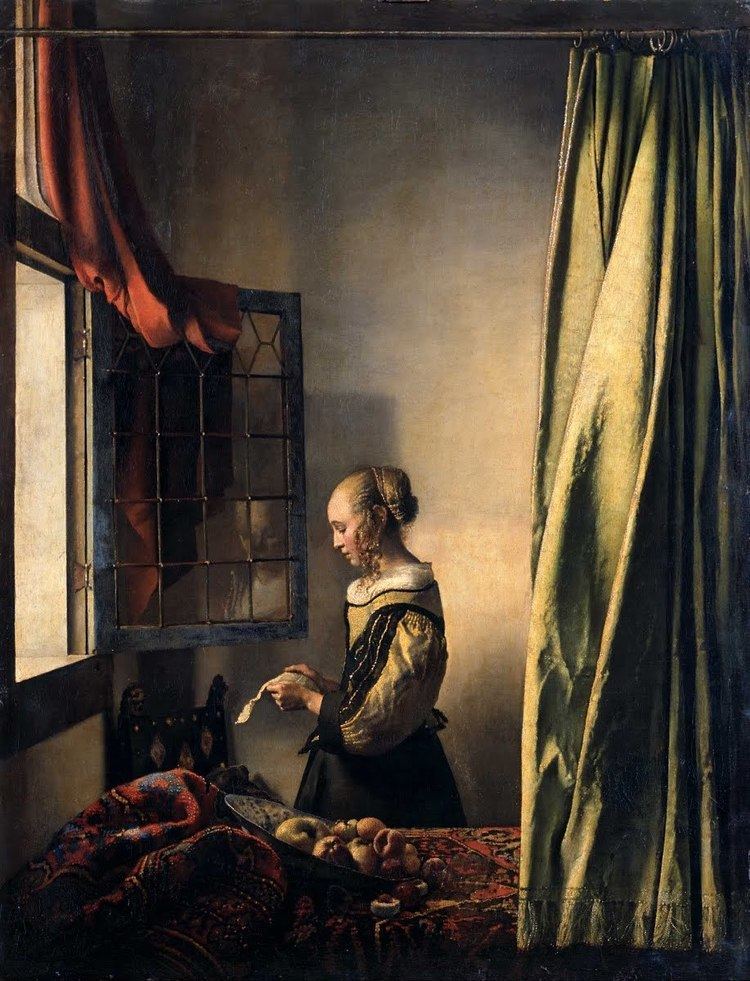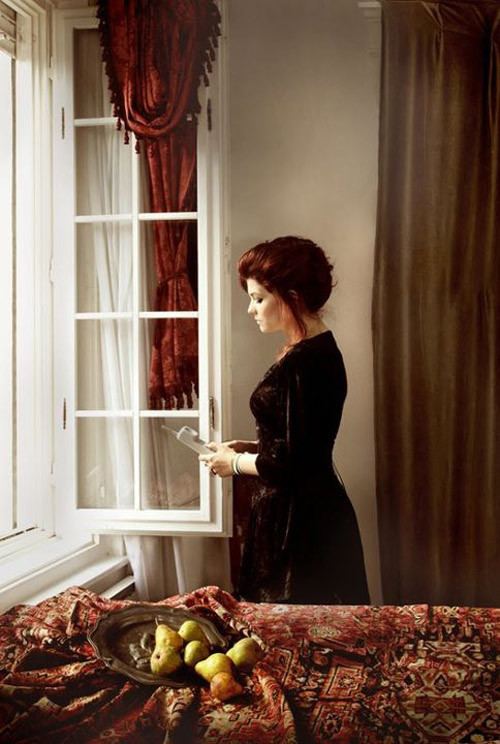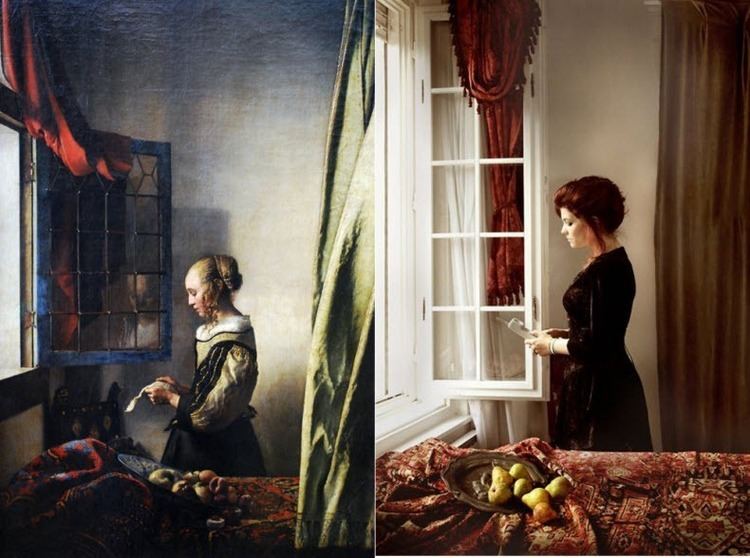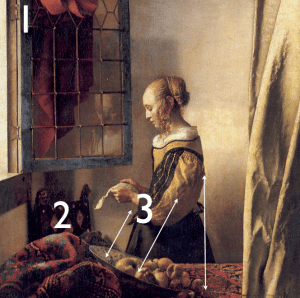Year 1657–1659 Periods Baroque, Dutch Golden Age | Created 1657–1659 Media Paint, Oil paint | |
 | ||
Dimensions 83 cm × 64.5 cm (33 in × 25.4 in) Location Gemäldegalerie Alte Meister Genres Genre art, History painting Similar Johannes Vermeer artwork, Artwork at Gemäldegalerie Alte Meister, Oil paintings | ||
Film 131 girl reading a letter at an open window
Girl Reading a Letter at an Open Window is an oil painting by Dutch Golden Age painter Johannes Vermeer. Completed in approximately 1657–59, the well-preserved painting is on display at the Gemäldegalerie in Dresden. For many years, the attribution of the painting—which features a young Dutch woman reading a letter before an open window—was lost, with first Rembrandt and then Pieter de Hooch being credited for the work before it was properly identified in 1880. After World War II, the painting was briefly in possession of the Soviet Union.
Contents
- Film 131 girl reading a letter at an open window
- Composition
- Symbolism and technique
- History
- Painting materials
- Legacy
- References
Composition

The painting depicts a young Dutch blonde standing at an open window, in profile, reading a letter. A red drapery hangs over the top of the window glass, which has opened inward and which, in its lower right quadrant, reflects her. A tasseled ochre drapery in the foreground left, partially closed, masks a quarter of the room in which she stands. The color of the drape reflects the green of the woman's gown and the shades of the fruit tilted in a bowl on the red-draped table. On the table beside the bowl, a peach is cut in half, revealing its pit.
Symbolism and technique
In Vermeer, 1632–1675 (2000), Norbert Schneider indicates that the open window is on one level intended to represent "the woman's longing to extend her domestic sphere" beyond the constraints of her home and society, while the fruit "is a symbol of extramarital relations." He concludes that the letter is a love letter either planning or continuing her illicit relationship. This conclusion, he says, is supported by the fact that x-rays of the canvas have shown that at one point Vermeer had featured a Cupid in the painting. This putto once hung in the upper right of the piece before, for whatever reason, Vermeer drew the draperies over it.

The draperies themselves, hanging in the left foreground, are not an uncommon element for Vermeer, appearing in seven of his paintings. Even more common, the repoussoir appears in 25, with Girl Reading a Letter at an Open Window, one of three which feature a rug-covered table or balustrade between the figure and the viewer. It was the last painting in which Vermeer featured this device.

This painting and Officer and Laughing Girl represent the earliest known examples of the pointillé (not to be confused with pointillism) for which Vermeer became known. John Michael Montias in Vermeer and His Milieu (1991) points out the "tiny white globules" that can be seen in the brighter parts of both paintings, including the still life elements of both and the blond hair specifically in this work. This use of light may support speculation among art historians that Vermeer used a mechanical optical device, such as a double concave lens mounted in a camera obscura, to help him achieve realistic light patterns in his paintings.
History

Vermeer completed the painting in approximately 1657–59. In 1742, Augustus III of Poland, Elector of Saxony, purchased the painting under the mistaken belief that it had been painted by Rembrandt. In 1826, it was mis-attributed again, to Pieter de Hooch. It was so labeled when French art critic Théophile Thoré-Bürger came upon it, recognizing it as one of the rare works of the Dutch painter and restoring its proper attribution in 1860.
Girl Reading a Letter at an Open Window was among the paintings rescued from destruction during the bombing of Dresden in World War II. The painting was stored, with other works of art, in a tunnel in Saxony; when the Red Army encountered them, they took them. The Soviets portrayed this as an act of rescue; some others as an act of plunder. Either way, after the death of Joseph Stalin, the Soviets decided in 1955 to return the art to Germany, "for the purpose of strengthening and furthering the progress of friendship between the Soviet and German peoples." Aggrieved at the thought of losing hundreds of paintings, art historians and museum curators in the Soviet Union suggested that "in acknowledgment for saving and returning the world-famous treasures of the Dresden Gallery" the Germans should perhaps donate to them Girl Reading a Letter at an Open Window and Sleeping Venus by Giorgione. The Germans did not take to the idea, and the painting was returned. Well-preserved, it is on display at the Gemäldegalerie in Dresden.
Painting materials

The painting was investigated by Hermann Kühn together with several other works of Vermeer in 1968. The pigment analysis has shown that Vermeer's choice of painting materials did not reveal any peculiarities as he used the usual pigments of the baroque period. The green drapery in the foreground is painted mainly in a mixture of blue azurite and lead-tin-yellow, while the lower part contains green earth. For the red drapery in the window and the red parts of the table covering Vermeer used a mixture of vermilion, madder lake and lead white.
Legacy
This painting has been an inspiration to other artists, such as Tom Hunter, whose artistic photo interpretation of the somber tone of emotion and the bowl of fruit shows a young mother and her child reading an eviction notice.
